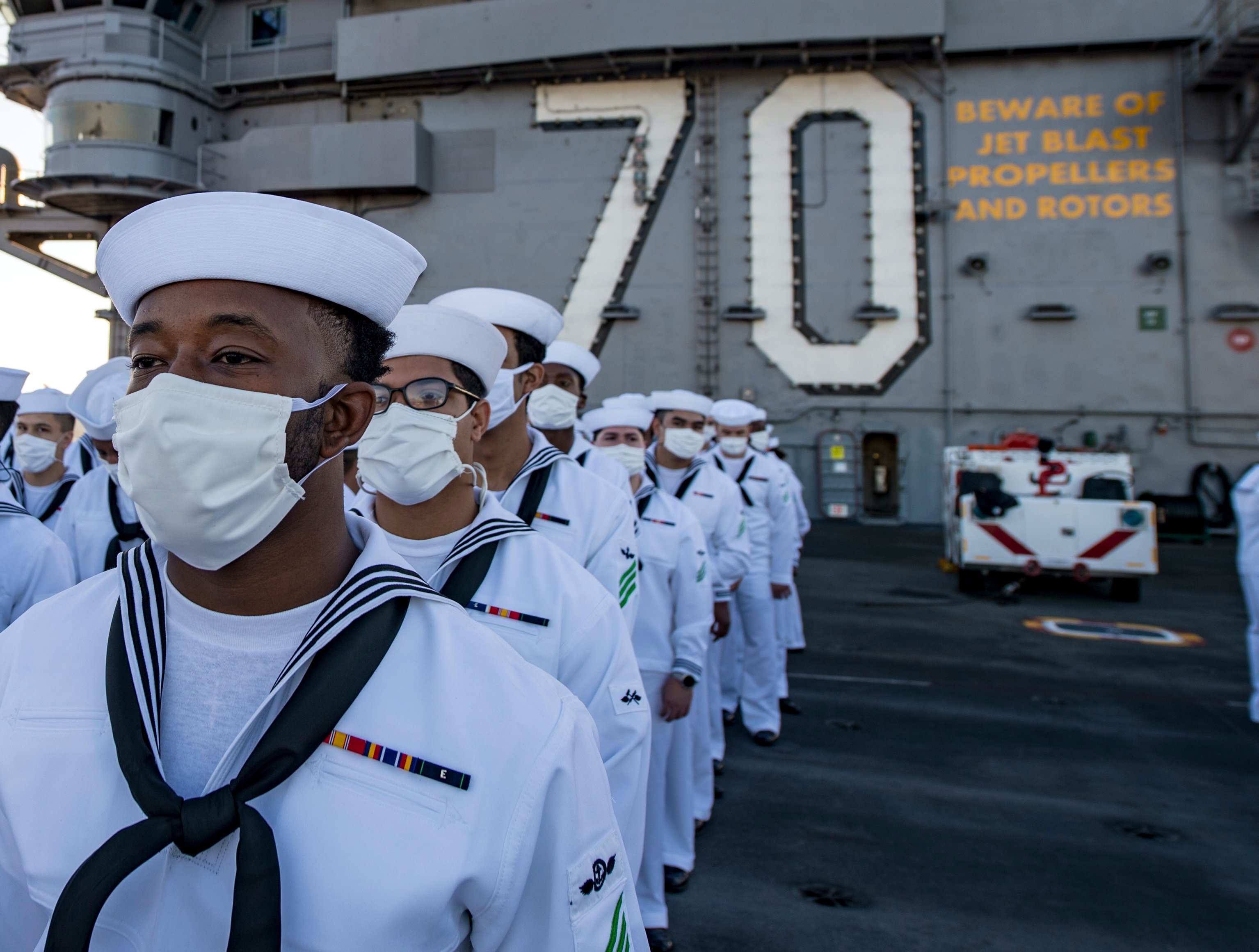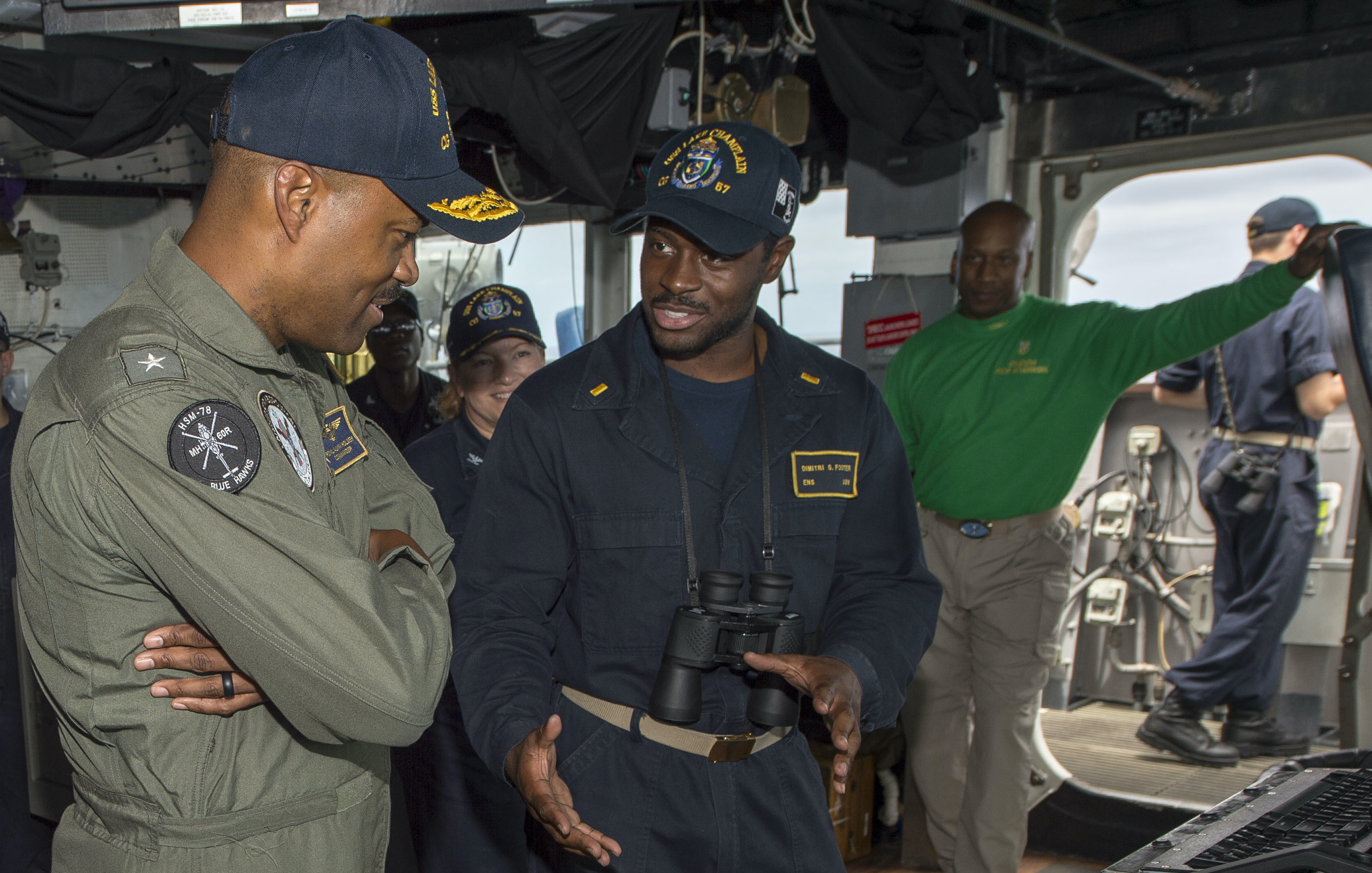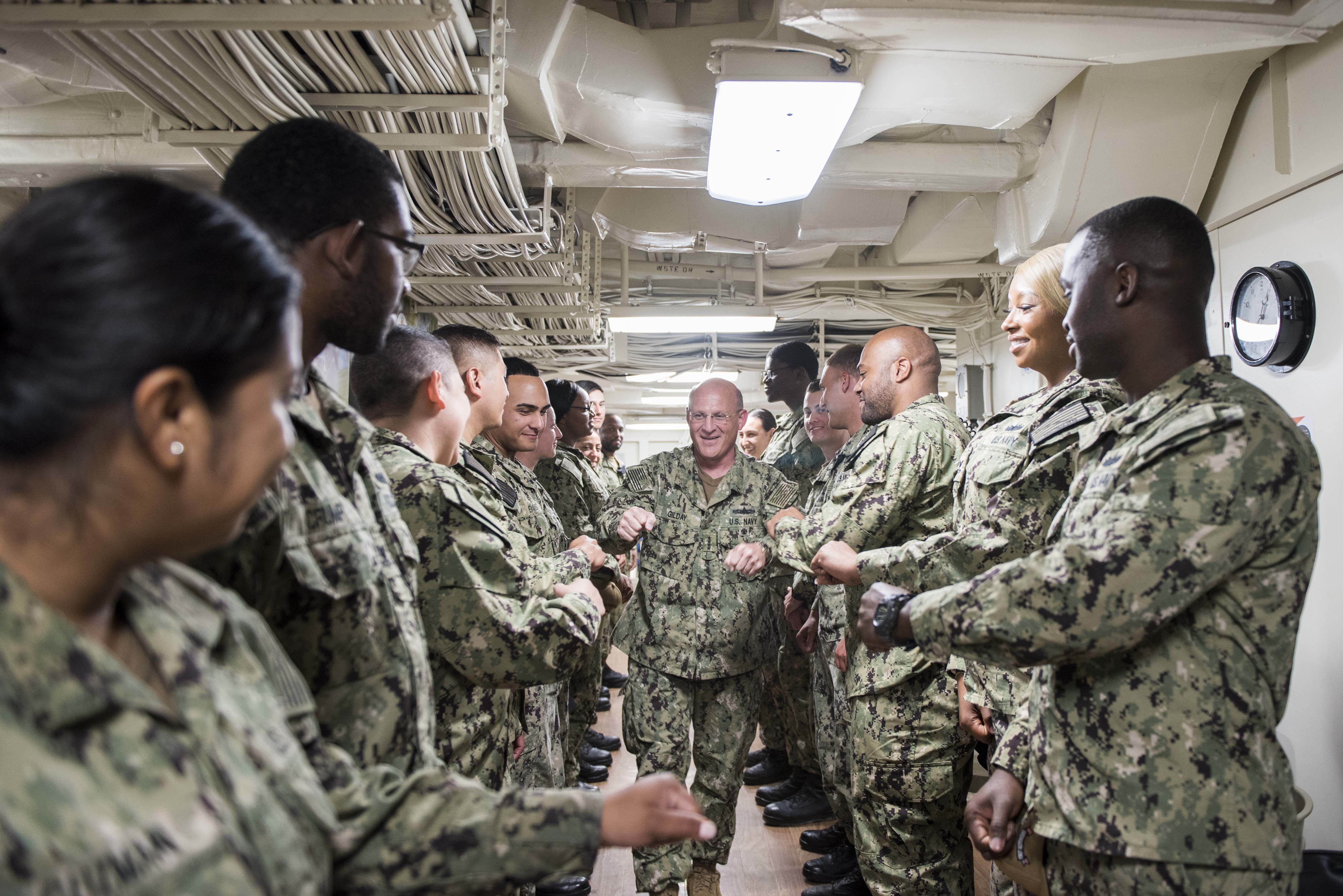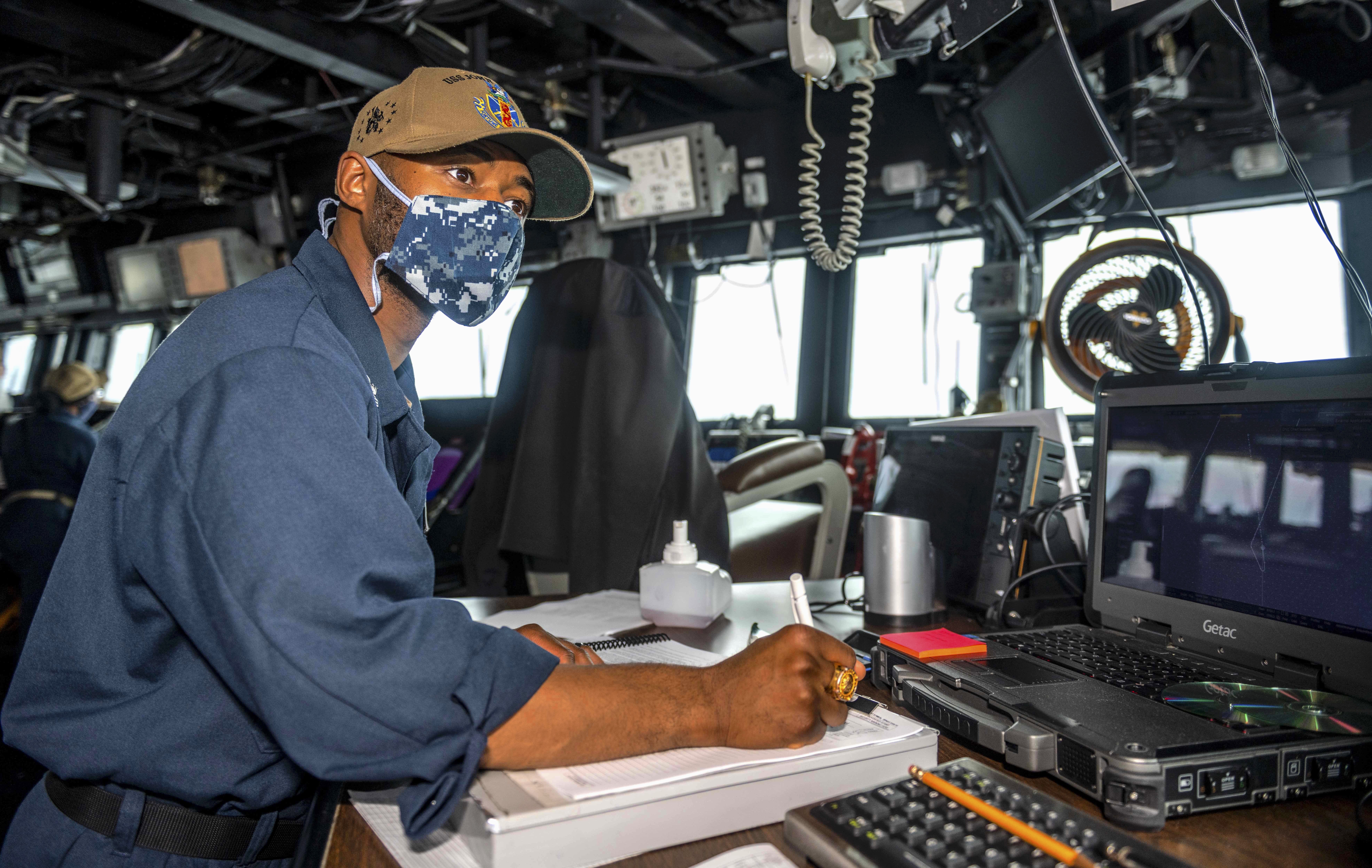
In 1972, then-Chief of Naval Operations Adm. Elmo Zumwalt made a public declaration on the need to fight racism in the Navy.
Two years after the service instituted a wide range of reforms to tackle discrimination, the Navy was still facing major problems. In 1972, racial violence broke out on three ships in a matter of months, prompting Zumwalt to issue a public rebuke to senior leadership to take the reforms seriously.
“I am speaking to you. Through you, to the Navy’s entire command structure to emphasize again that this issue of discrimination must be faced openly and fully,” Zumwalt said to senior leaders.
The 1972 directive placed pressure on leaders to create more equity across the service. In years that followed the service lifted restrictions on women to serve in ships and created more opportunities for minority sailors.
“[Zumwalt’s] very clear about, ‘we as a Navy have to do better’,” Rear Adm. Alvin Holsey, director of the Navy’s Task Force One, told USNI News earlier this month.

Almost 50 years later, the Navy is asking itself the same questions against the backdrop of widespread racial unrest in the U.S.
“This moment here, the George Floyd murder, sparked that piece again and makes folks ask those questions again: ‘How are we really? Are we any better?’,“ Holsey said.
Shortly after Floyd’s death, Chief of Naval Operations Adm. Mike Gilday established Task Force One that would address racism, sexism and other biases in the service.
“It’s bigger than a Black issue, white issue. We’re looking at ageism, sexism, the religion piece. We’re touching a lot of different things,” Holsey said.
For the Navy, the trick will be to avoid the fate of other efforts that earnestly tried to tackle the underlying social and cultural problems in the service but lost momentum over time, officials told USNI News.
Many of those initiatives were rooted in scandals in and outside of the service.
“You can look back at a big ‘aha’ moments. You can say back to Tailhook of [1991] when that occurred. The alcohol-related incidents — you put more focus on that piece there. Within the last three to five years — the [Sexual Assault Prevention and Response] program, the ‘Me Too’ movement — we turned cultural on a dime to get after that,” Holsey said.
“We put a focus on things and we kind of back off. We think we’re okay.”

The Navy’s not alone in struggling to fully address disparities. In 2011, the Pentagon conducted a wide-ranging study on diversity and inclusion, mandated as part of the Fiscal Year 2009 National Defense Authorization Act.
The report presented recommendations on how to improve diversity across the services, especially in officer ranks. However, after the report was issued, the recommendations largely fell by the wayside.
“The big thought about that piece when it came out, it was a great brief, there’s a lot of work put into it. A lot of people were big brains and analysis went into it, but nothing really happened,” Holsey said.
Like in Zumwalt’s era, the Navy is seeing fewer women and minorities in leadership positions throughout the service.
In the officer corps, women make up about 23 percent of the force for new ensigns coming into the service, according to a January snapshot of Navy personnel. Only about 12 percent of captains are female. For flag ranks, there were 16 female admirals out of 219 and none with four stars.
Black officers account for 7.3 percent of ensigns and 6.4 percent of captains, according to a USNI News review of the data. In the flag ranks, as of January, there were six Black admirals out of 219 with none serving in the three- or four-star ranks. On the enlisted side, Black sailors account for 18 percent of the force. 17.5 percent of chiefs are Black, as are 19 percent of petty officers and 20 percent of seamen, firemen and airmen in the E-1 to E-3 pay grades.

The service is faced with a declining recruit pool and a mandate in 2020 to add 40,000 new sailors. In order to hit those targets, the service has to not only recruit new sailors but retain the ones it already has. According to Navy data, the service has seen flat retention rates in its most junior enlisted sailors since 2018 and a slight downward trend in its sailors who have served more than six years. The math incentivizes the service to improve the quality of life for all its sailors as a boost to retention.
Before this summer’s unrest, the Navy had begun coalescing its own effort to improve life in the service and, hopefully, the effectiveness of its sailors.
Three months after taking charge of the service, Gilday issued a message for the service to establish a “culture of excellence” in the service.
“In order to more effectively recruit, develop, manage, reward, and retain the forces of tomorrow, aiming to simply avoid doing the wrong thing is too low a bar; we must actively pursue that which is right,” Gilday wrote in a message to the fleet in November.
“When sailors feel included, respected, and empowered, they will be more ready to win wars, deter aggression and maintain freedom of the seas.”
The effort, not widely advertised outside the service, aims to improve the culture in the Navy as a whole, rather than go after just one set of problems at a time.

“The culture of excellence was sort of designed around the theory that we we’ve been going after individual problems, one at a time but not necessarily the whole behavior space,” Rear Adm. Putnam Browne, the director of the 21st Century Sailor Office program, told USNI News in an interview earlier this month.
“If you have someone that harbors certain prejudices, they might also have certain other destructive behaviors or negative things that are not helping the Navy.”
The inclusion and diversity effort was accelerated at the start of Task Force One.
“This idea that discrimination and bias are commonly experienced by our Black and African-American teammates … It reinforces that the Navy does still have a culture problem based upon implicit bias,” Chief of Naval Personnel Vice Adm. John Nowell said in July.
Specifically, the mandate from Gilday is to remove discrimination barriers for sailors to be recruited, retained and promoted. The effort also includes a look at racial disparities in military justice and education.
“We want to make sure we can kind of formalize and get that training there to understand it’s okay to be different. It’s okay to have differences. We’re still one team who’s had more in common than we have differences,” Holsey said.
“What the sailors are asking for is action. Action that improves readiness of our Navy is our goal, as well as unleashing that potential of every men and women who serve.”

Part of the effort is senior leaders listening to the experiences of sailors across the fleet.
Holsey told a story of talking to a young lieutenant who talked about the difference with being in and out of uniform.
“She knows the respect that comes with it. She knows that she was respected. She knows that uniform is somewhat revered, but she knows that when she takes off her uniform, she just another black female and no one cares anything about it,” he said.
In June, Lt. Cmdr. Desmond Walker summarized the issue in Proceedings. “Black officers often bear the weight of being labeled examples of black excellence or black incompetence. Imagine not only having to fly a $100 million aircraft over an adversary’s country to drop ordnance or conduct operations at risk of being shot down, but also experiencing the persistent emotional drain of questioning whether you are being judged on the content of your character and performance or the color of your skin.”





